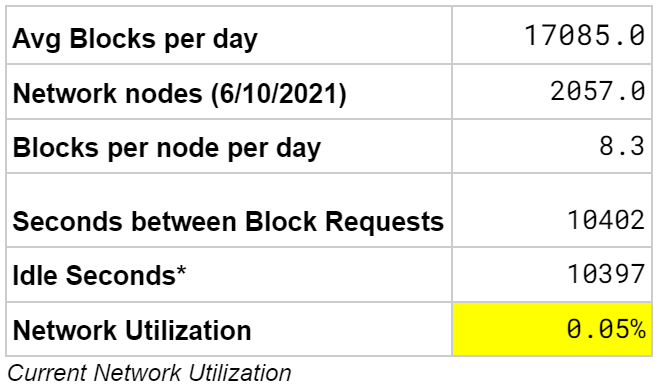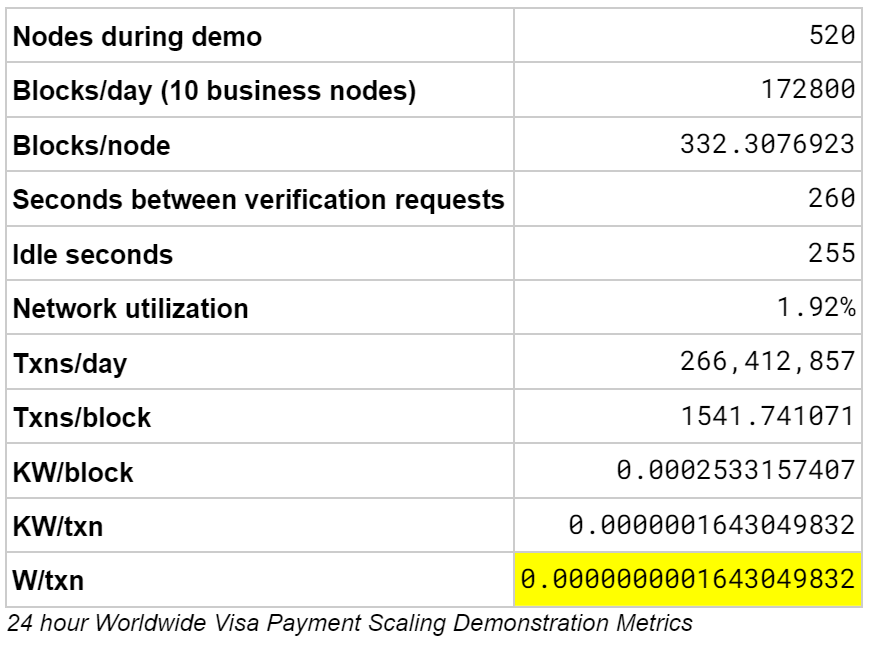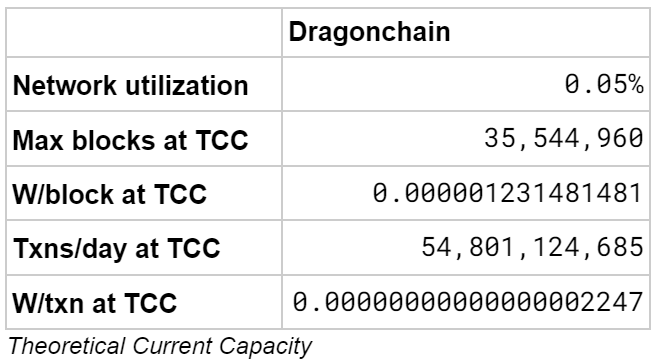Dragonchain Network Energy Efficiency and Sustainability Report
Dragonchain's primary focus has always been to solve real-world business problems at Enterprise scale. Recently, energy-related concerns are a top priority for businesses. Dragonchain has products to ensure the accurate tracking and accounting of a business's carbon footprint. Our solution is efficient, scalable, and sustainable so that any system can prove carbon emissions with very low energy consumption.
Not only can we help businesses with reporting and compliance, but due to the architecture of the Dragonchain platform, Dragonchain nodes are one of the lowest consumers of energy in the blockchain space, even while idle. With Dragonchain, businesses can ensure that they are using blockchain technology in an energy-efficient and responsible way.
Blockchain Carbon Emissions Estimates
Dragonchain platform infrastructure (including nodes managed by Dragonchain) are by default hosted in carbon neutral facilities, based upon information from AWS†. Over 90% of Dragonchain verification nodes are hosted by users "on-premises" on the Linode and/or Hetzner cloud platforms, both of which have ongoing initiatives to expand their use of renewable energy sources and reduce their hosting carbon footprint.
Network Energy Consumption
Recommended server specs for Dragon Net is 1 CPU and 2GB RAM. The majority of Dragon Net node runners use Linode or Hetzner VPS for verification nodes. The standard arrangement for a Dragon Net node deployment is 3 nodes on a 4GB VPS. According to Linode's website, a 4GB Linode runs at 2.66 Wh (0.00266 KWh) which brings our per node consumption to 0.89 Wh (0.00089 KWh). We included data in the table below for the latest 4GB Raspberry Pi 4 for comparison, as the Raspberry Pi is popular amongst node runners from other blockchains. Dragon Net operates extremely efficient verification nodes. Dragonchain's current raw energy network consumption is 43.77296 KW per day.
Metrics used in our calculations are an average as of 6/10/2021 and are sourced from metrics.dragonchain.com. It is our intention to publish live metrics daily in an efficiency report available on the Dragonchain metrics site.
Transaction and Block Energy Consumption
Based on our latest metrics we see that each block verified by a Dragon Net node consumes approximately 0.002 KW (2 W) of energy. At current transaction volume, every transaction verified on Dragon Net consumes approximately 0.00002 KW (0.02 W) of energy.
Calculating Current Network Capacity
In the table below (Current Network Utilization), we calculate the average blocks that a verification node should expect in a given day and its average time between verification requests based on the current blocks per day and the number of nodes on the network. Based on a highly conservative estimate of full network capacity, with zero concurrent requests, and a perhaps too conservative estimate of 5 seconds per verification request processing*. This gives us idle seconds between requests, and from this, network utilization.
Based upon this network utilization model, we can calculate theoretical energy consumption at full network capacity (explained further in the below section Introducing Theoretical Current Capacity). Because the platform is independently scalable, any increase in network usage will see energy usage per transaction decrease.
Metrics From the Visa Payment System Scaling Demonstration
On Jan 7, 2020, Dragonchain executed a 24-hour live-streamed demonstration of platform scalability. The project executed over 260 million business transactions on the operational Dragonchain network (Dragon Net). On that day, Dragon Net had 520 active nodes. During the 24-hour period, those nodes verified and decentralized proof for every individual transaction with a network utilization rate of ~1.94%. If operated at full capacity, the 520 nodes at that time would have been able to validate ~13 billion transactions for an estimated energy usage of 1.64e-10 (0.0000000001643049832) watts per transaction.
Introducing Theoretical Current Capacity (TCC)
We would like to introduce the concept of Theoretical Current Capacity to measure both the available network capacity and the energy usage per transaction, based on the number of verification nodes currently running. This number will be an important metric that we expect to add to the Dragonchain live metrics page.
At today's transaction volume and network node participation levels, we measure 0.05% capacity. Based on that number, Dragon Net's Theoretical Current Capacity is more than 54 billion daily transactions consuming 2.25e-17 (0.00000000000000002247) watts per transaction.
Businesses wanting to leverage the security of Bitcoin and Ethereum can now do so responsibly.
Responsible and Sustainable Use of Bitcoin and Ethereum
Dragonchain leverages Bitcoin and Ethereum for their security in providing measurable proof for all transactions. Both Bitcoin and Ethereum have their own energy consumption issues, however, Dragonchain leverages these power hungry blockchain networks in a very efficient way. Instead of businesses individually sending all of their transactions directly to Bitcoin and/or Ethereum, Dragonchain batches all blocks and calls on Ethereum only eight times a day and Bitcoin twelve times a day.
Using Dragonchain, a business benefits from fast decentralization via Dragon Net with an extremely low energy footprint. Dragonchain provides scaled access to Bitcoin and Ethereum for Enterprise use. Businesses wanting to leverage the security of Bitcoin and Ethereum can now do so responsibly. Dragonchain gives businesses a way to leverage Proof-of-Work blockchains in the most efficient way possible.
What does this all mean?
For illustration, it may be helpful to compare these energy metrics to real world figures. In the amount of energy the average US household uses per hour, a Dragon Net node can currently verify 58,166 transactions. When you consider the capacity of the Dragonchain network at TCC, with the amount of energy required to run a 60 W light bulb, Dragon Net could verify 2.61e+18 transactions (that's approximately 2,605,739,548,872,180,000, or over 2.6 quintillion transactions). This also means that for every new Dragon Net verification node added the network will gain capacity of over 26 million transactions, while only consuming 0.89 Watts/hr more.
Dragonchain plans to add energy consumption metrics to our live metrics page in the coming weeks. We welcome any blockchain to do the same in the interest of full disclosure as we all strive to create a more sustainable environment.
Contact us today to learn more about how Dragonchain can help your business meet its environmental goals.
* These calculations assume that at full capacity, there are no concurrent verification requests on any node, and every verification process will average a full 5 seconds to verify a block. In reality, a verification node would likely be able to process 3 to 10 parallel verification requests without congestion, and verification times are significantly faster than 5 seconds.
** Level 1 business blockchains node energy usages are dependent on the business and would be included in the businesses' energy consumption metrics.
† Dragonchain platform infrastructure is hosted in 100% carbon neutral regions as published by Amazon AWS.
Sources:






